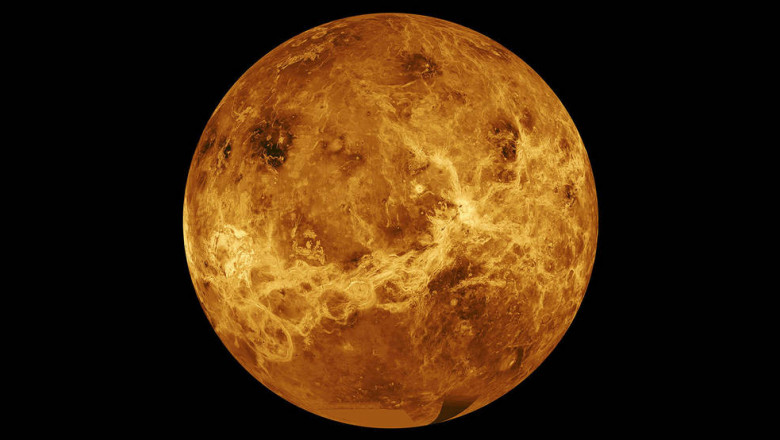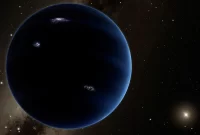Is it possible to live on Venus? The latest human discoveries 2021
A group of astronomers claim to have found signs of life in the atmosphere of Venus. Also one of the most interesting things about extraterrestrial space is the possibility of extraterrestrial life on other planets. Researchers are now talking about the possibility of life on Venus.
A group of astronomers claim to have found signs of life in the atmosphere of Venus. The New York Times reports in two articles that the group of astronomers and astronomers found the chemical phosphine in the thick atmosphere of Venus. They believe that “phosphine” was probably produced by a group of microorganisms that are compatible with Venus.
Cardiff University of Wales astronomer Jane Graves first discovered the chemical, phosphine, in 2017 in the atmosphere of Venus. Scientists who were trying to find out whether this was true or not confirmed the astronomer’s discovery in March 2019 using a more powerful telescope in Chile.
Astronomers have identified possible signs of finding life on Venus
They recorded “phosphine” at various levels of Venus’ atmosphere from 5 to 20 parts per billion. This is thousands of times the amount of “phosphine” in the Earth’s atmosphere. However, the study was halted due to the onset of the corona epidemic, and subsequently, the planet Venus moved further away from the Earth’s horizon.
Although the presence of “phosphine” on the planet Venus has been confirmed, scientists still have not been able to collect or even photograph any microorganisms from there. The only thing scientists can say about the possibility of life on Venus from the data found is that light is constantly decomposing “phosphine”, so its void in the atmosphere must be refilled and, in theory, microbes can do it. They are like that.
With the new discovery of scientists, it seems that many secrets are hidden in our closest planet’s neighbor (Venus). Evidence shows that life on Venus is more feasible and better than on Mars. Climatic models show that liquid water existed on the hellish planet Venus millions of years before Earth.
Life on Venus
Scientists and astronomers have published new news about the shining planet Venus, which can be very promising to know the history of humans.
NASA researchers say traces of phosphine, a molecule potentially produced by living organisms, have been found in the planet’s clouds. This molecule allows life on the planet Venus.
Venus Clouds
Venus, or its Persian name is Venus or Venus, is the closest neighbor to Earth. The planet is similar in structure to Earth, but slightly smaller. The planet is very dense and toxic, trapping heat, and as a result, the planet reaches a temperature of 471 degrees Celsius, hot enough to melt lead.
Researchers speculate that microbes may be present in the clouds of Venus, which have a temperature of about 30 degrees. These clouds are about 90% sulfuric acid and terrestrial microbes can not survive in this environment. Scientists say Venus microbes may use an unknown mechanism to resist the acidic environment.
Meanwhile, the temperature of Venus changes by about 18 F by changing its conditions and converting it to Earth conditions, which is also a temperature for life.
The new models of Venus do not prove that Venus was inhabited in ancient times, but they show that it could have been habitable. This information allows astronauts to assume that Venus is habitable by calculating and controlling its orbit. This also proves the theory of how life came to be on earth. Scientists still think that the scattering of meteorite components between Mars and other planets may have created life. Venus could be a place of limited life if life had been current on the planet millions of years ago.
This will stimulate scientists to do much more research on life on Venus than on Mars, and this will not be easy. Because the Venus probe did not last more than a few hours in the extreme heat of the planet when it was sent to Venus.
A new discovery about life on the planet Venus
“Now that we have phosphine, we have to find out if it’s true for life,” said Leonardo Testi, an astronomer at the Southern European Observatory in Garching, Germany.
On September 14, scientists announced that they had found phosphine in the Venus atmosphere using the Atacama Millimeter Array in Chile and the James Clerk Maxwell Telescope in Hawaii, about 55 kilometers above the surface of Venus. Radio data show that light is absorbed at millimeter wavelengths that correspond to a concentration of phosphine of 20 parts per billion in the atmosphere.
Researchers have experimentally suggested that in an area of the atmosphere where phosphine is found – away from the crushing pressures and scorching temperatures of the planet’s surface – some microbes in the air can survive.Scientists say they have found a gas called phosphine in the acidic plains that cover the planet Venus, indicating that microbes may have once lived in this uninhabitable neighbor of the planet.
The results of a new study show that the planet Venus is not covered by the ocean and is hot all over the lava, which is why it can not host life.On this basis, NASA points out that the planet Venus can not host life; Venus is the second Earth-like planet in the solar system, orbiting the Earth and Mercury, respectively.Scientists had hoped that Venus was once in an ancient ocean, but a new study shows otherwise.Recent evidence has shown that what flows at the heights of Venus is not water but molten lava.
After re-examining the rocks in the area, a team of experts has determined that what was initially said to be granite rocks are actually basalts formed by the rapid cooling of lavas.These days, the issue of human travel to other planets and life on them is hot, due to the increase in the Earth’s population and the destruction of the environment. The population of the earth a hundred years ago was about two billion, but today it is about eight billion. In other words, the world population has quadrupled in the last hundred years, the reason for this increase in population is the increase in health care, the rapid development of medical science, and so on. In the past, families had children, but various diseases and lack of health caused the death of many children. On the other hand, widespread, protracted wars and insecurity caused many deaths.
But today, especially after the end of World War II, the world has faced an unprecedented population growth, increasing population growth has caused the destruction of many forests, increased air pollution, increased land temperature, dirty sea water and … .
Now we have to imagine that if we continue like this for the next hundred years, the Earth’s population will probably reach over twenty billion people, with such a population there will definitely be no more life on Earth. With only about five hundred years left on Earth, he predicted that by another five hundred years the earth would become a fireball, then explode.
Therefore, human beings should think about living on other planets, now you have to think about which planet is suitable for human life?None of the planets in the solar system can be counted on at the moment, but it must be said that it is impossible to live on Venus, in a word, it is impossible for humans to live on this planet.
Every day on Venus is about 243 days on Earth, the direction of its rotation is exactly the opposite of Earth, walking on the surface of Venus is very difficult because the atmosphere is very thick. The atmospheric pressure of this planet is equivalent to water pressure at a depth of 914 meters. It rains sulfuric acid, which can kill any moving creature, but the rains never hit the planet’s surface because the planet’s surface is so hot that it evaporates the rain. These horrible conditions do not allow any movement to live.
In 1982, Verna 13, built by the former Soviet Union, reached the surface of the planet, but the planet’s conditions destroyed the spacecraft within two hours. Immediately, by creating several space stations at this altitude, human living conditions will be provided there.
The possible detection of phosphine gas in the atmosphere of the planet Venus raised the question in the minds of some scientists whether this gas may have a biological origin or not? According to our definition of life, the planet Venus seems very unviable, and the question was strange and controversial. However, scientists have now concluded that this hellish planet could actually be viable; Of course, above the clouds and above its scorching surface.
The amount of sunlight at certain altitudes of Venus is comparable to that of the sun on Earth; This means that photosynthetic microbes suspended in the air can probably survive at those altitudes. In addition, the thick cloud layer provides some protection against harmful ultraviolet radiation, and it is possible that the acidity of those clouds is lower than expected and within a favorable range for life. The researchers wrote in their article:
In terms of biodegradability, the planet Venus seems a very unlikely environment. The conditions on its surface are really hellish. The planet’s thick atmosphere is almost entirely composed of carbon dioxide, circulating sixty times faster than the planet itself, creating strong winds. The planet’s sky is full of dense clouds of sulfuric acid, and its atmospheric pressure at zero altitude is almost a hundred times that of Earth at that altitude.
In addition, the planet’s surface temperature is very high, averaging 471 degrees Celsius. So there was a lot of controversy when astronomers announced last year that they had discovered phosphine gas in the atmosphere of Venus. The reason for this is that one of the possible explanations for the existence of this gas is the presence of microorganisms. Phosphine can be found on Earth in environments such as low-oxygen or anaerobic ecosystems. This gas is also found in swamps and sludges where anaerobic microbes live. Phosphine is also found in the intestines and is naturally produced by anaerobic microorganisms that produce phosphine, and the clouds of Venus are anaerobic.



